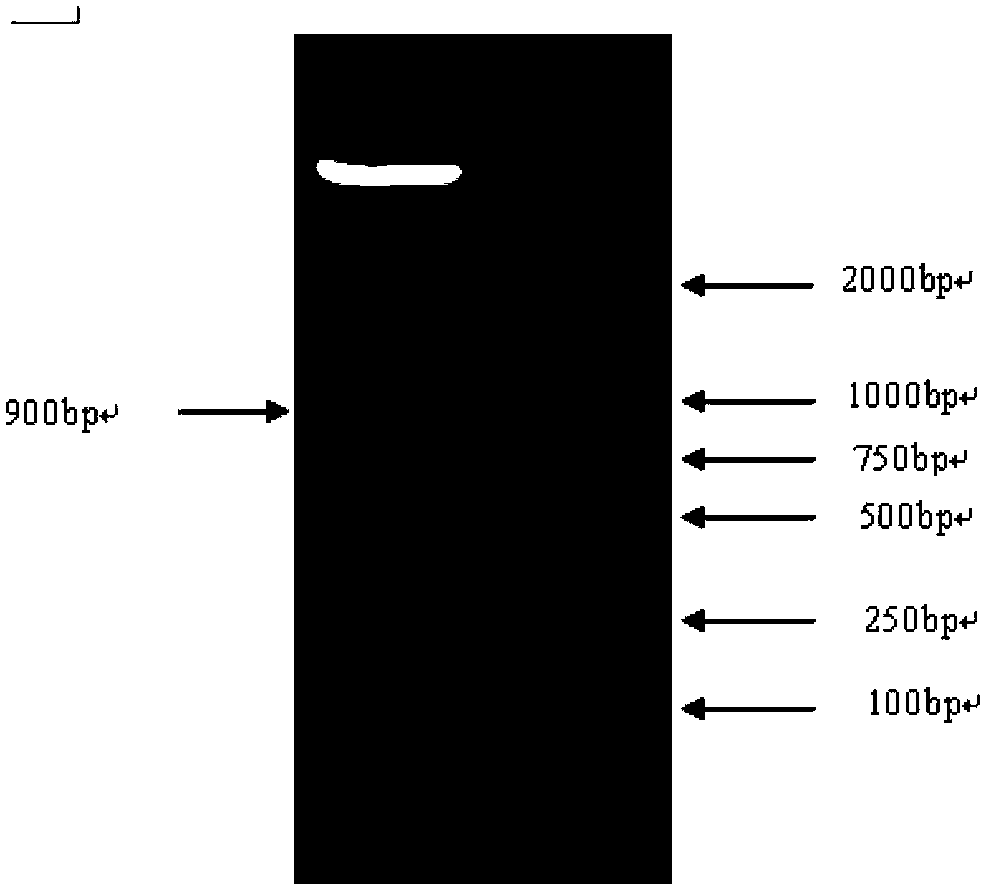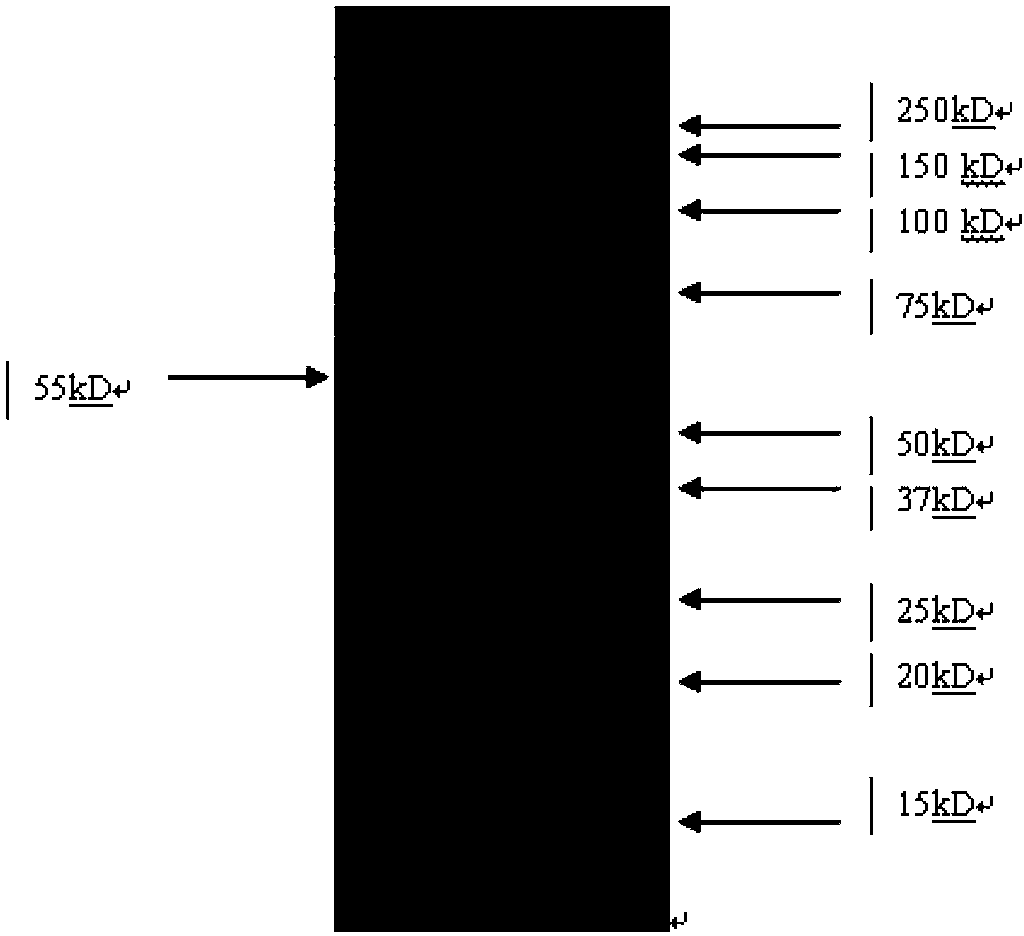Expression vector containing detection label IgG (immunoglobulin g), construction method and application thereof
An expression vector and detection label technology, applied in the field of molecular biology experiments, can solve the problems of cumbersome detection and detection process of target protein, inability to complete antibodies, etc., to reduce the probability of false negative detection results, improve accuracy and sensitivity, use handy effect
- Summary
- Abstract
- Description
- Claims
- Application Information
AI Technical Summary
Problems solved by technology
Method used
Image
Examples
Embodiment 1
[0100] This embodiment uses pET28a prokaryotic expression vector. Rat blood samples were extracted, total RNA was extracted and reverse transcribed into cDNA. Design the upstream primers and downstream primers shown in 2-2, use the mouse cDNA as a template, and use the above-mentioned amplification primers to perform PCR amplification to obtain the desired constant region gene of mouse IgG. The constant region gene of mouse IgG was double-digested with Hind III and Xho I, and the pET28a expression vector was double-digested with Hind III and Xho I, and the two fragments were recovered by DNA electrophoresis at the same time. Fragments and gene fragments were ligated with T4 DNA ligase, reacted at 16°C for 2 hours, took 10 microliters of the ligated products and added them to 100 microliters of E. Medium heat shock for 90 seconds, then let stand on the ice-water mixture for 1 minute, add 100 microliters of SOC medium at 37°C, incubate in a shaker at 37°C for 1 hour, spread on ...
Embodiment 2
[0106] This embodiment uses pCDNA3.1 / His C eukaryotic expression vector. Rat blood samples were extracted, total RNA was extracted and reverse transcribed into cDNA. Design the upstream primers and downstream primers shown in 1-2, use the mouse cDNA as a template, and use the above-mentioned amplification primers to perform PCR amplification to obtain the desired constant region gene of mouse IgG. The mouse IgG gene was double-digested with Xho I and Xba I restriction sites, and the pCDNA3.1 / His C vector was double-digested with Xho I and Xba I at the same time, and the two restriction fragments were simultaneously recovered by DNA electrophoresis, with 1: Carry out the ligation reaction between the carrier fragment and the gene fragment with T4 DNA ligase at a molar ratio of 4, react at 16°C for 2 hours, take 10 microliters of the ligation product and add it to 100 microliters of Escherichia coli DH5α competent cells, and place it in the ice-water mixture After 30 minutes, h...
Embodiment 3
[0109] This embodiment uses pET28a prokaryotic expression vector. Rabbit blood samples were extracted, total RNA was extracted and reverse transcribed into cDNA. Design the upstream primers and downstream primers shown in 2-3, use the rabbit cDNA as a template, and use the above-mentioned amplification primers to perform PCR amplification to obtain the desired constant region gene of rabbit IgG. The constant region gene of rabbit IgG was double-digested with Hind III and Xho I, and the pET28a vector was double-digested with Hind III and Xho I at the same time, and the two fragments were recovered by DNA electrophoresis at the same time, and the vector was digested at a molar ratio of 1:4 Fragments and gene fragments were ligated with T4 DNA ligase, reacted at 16°C for 2 hours, took 10 microliters of the ligated products and added them to 100 microliters of E. Medium heat shock for 90 seconds, then let stand on the ice-water mixture for 1 minute, add 100 microliters of SOC med...
PUM
 Login to View More
Login to View More Abstract
Description
Claims
Application Information
 Login to View More
Login to View More - R&D
- Intellectual Property
- Life Sciences
- Materials
- Tech Scout
- Unparalleled Data Quality
- Higher Quality Content
- 60% Fewer Hallucinations
Browse by: Latest US Patents, China's latest patents, Technical Efficacy Thesaurus, Application Domain, Technology Topic, Popular Technical Reports.
© 2025 PatSnap. All rights reserved.Legal|Privacy policy|Modern Slavery Act Transparency Statement|Sitemap|About US| Contact US: help@patsnap.com



